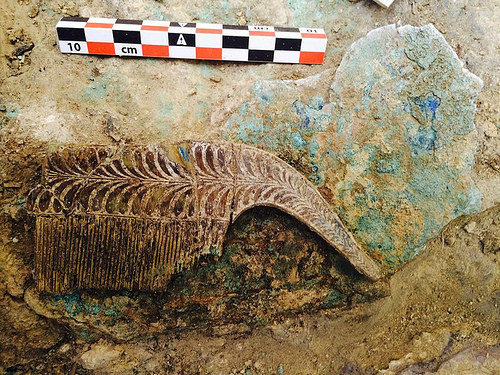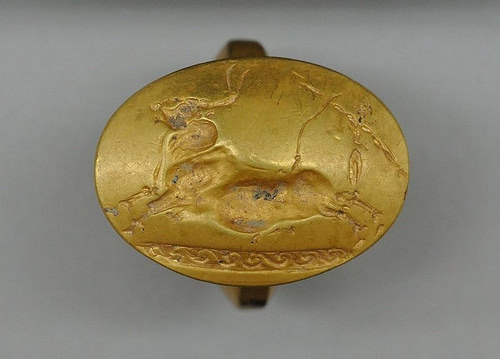“We have a snapshot here, captured in time, with the objects as they were placed around this guy. We can look at this not from an outside perspective, but from an insider’s perspective and imagine why and how they chose to place them in the grave.” – Jack Davis, Cincinnati University’s Carl W. Blegen chair in Greek archaeology.

PHOTO: popular-archaeology.com
PYLOS, GREECE – Archaeologists, students and specialists have uncovered a something experts are calling the “find of a lifetime” on the southwest coast of Greece.
It’s a discovery that is reminiscent of the momentous King Tutankhamen’s tomb in the Valley of the Kings, Egypt. It’s an intact, untouched Bronze-Age tomb near the Palace of Nestor. The Greek Culture Ministry is calling it the “most important to be have been discovered [in continental Greece] in 65 years.”
So far, archaeologist have found over 2,000 different objects near a buried skeleton. These include silver cups, precious stone beads, ivory combs, an intricate sword, many other weapons, and four gold rings.
Near the skeleton, an ivory plaque depicting a griffin, was buried. This discovery has earned the burial the nickname “Griffin Warrior”.
The find is immensely valuable, giving us a glimpse not only into the Ancient Greek, or Mycenaean culture, that lived on the Greek mainland at the time, but also their Minoan neighbors.
Many of the artifacts found in the tomb, including the rings, were made on Crete, the home of the ancient, powerful, seafaring nation of Minoans. The Minoans were known for their exquisite craftsmanship and metalworking. The Mycenaean on the mainland?…well, they were known for their wars.
The tendency is to assume that the warlike Mycenaean stole the gold and silver jewelry from the Minoans, and that the treasure buried with this “Griffin Warrior” is nothing more than pirate booty. However, Jack Davis, Cincinnati University’s Carl W. Blegen chair in Greek archaeology, thinks it goes deeper than that.
“We think that already in this period the people on the mainland already understood much of the religious iconography on these rings,” Davis said, “and they were already buying into religious concepts on the island of Crete. This isn’t just loot. It may be loot, but they’re specifically selecting loot that transmits messages that are understandable to them.”
The ‘loot’ does seem to have been laid out with special attention to the religious iconography on it, rather than just throw in a treasure chest and stashed somewhere in the grave.

PHOTO: popular-archaeology.com
A mirror was found above the Griffin Warrior’s legs. This seems to relate to the mirror depicted with a goddess in the fourth gold ring found at the burial. The third gold ring features a bull, which also matches a bronze bull’s head staff buried with the Griffin Warrior. This is a clear message, telling of the warrior’s authority and ritual power.
This burial is kind of like a Rosetta Stone to Mycenaean burials – a key, if you will.
Mycenaean warriors and kings were often buried with loot, but the trouble is that the grave goods were often buried with multiple persons, making it difficult to decipher what belonged to who, and why it belonged to them.
Since this grave only has one member, researchers are hoping that it will provide colorful insight into Mycenaean beliefs, and reveal just how much those beliefs were affected by their Minoan neighbors.
“What this allows us to do gets us beyond just thinking in terms of mere borrowing of prestige items or items to show off for display. This starts to get us into an understanding of actual beliefs and ideas and an ideology that existed in this time of the formation of the Mycenaean civilization, which is very difficult to get at.” – Jack Davis

